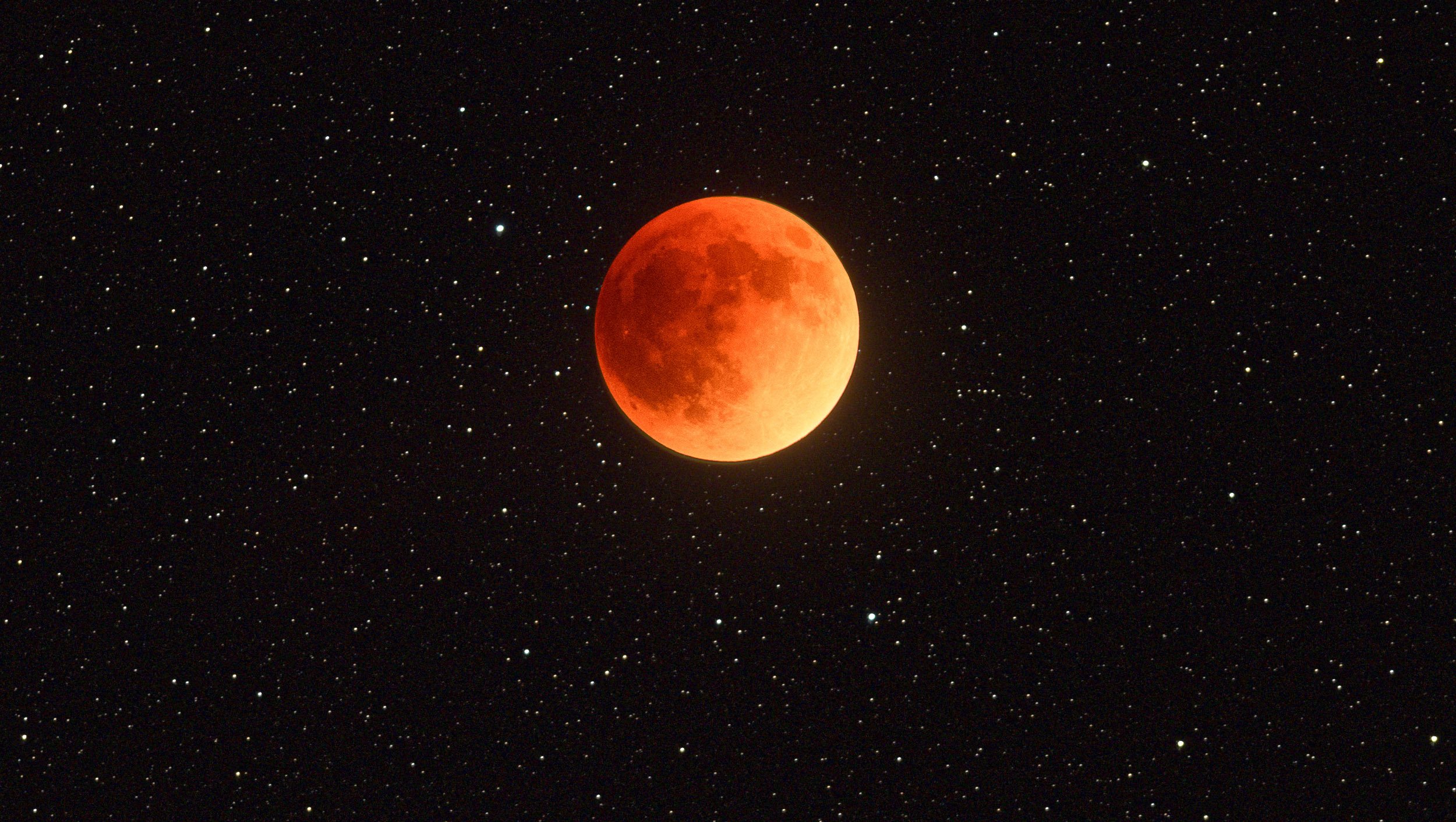A solar eclipse occurs when the Moon passes between the Earth and the Sun, blocking sunlight. A lunar eclipse happens when the Earth comes between the Sun and the Moon, casting a shadow on the Moon.
Solar eclipses are visible during the day, while lunar eclipses are seen at night. These celestial events have fascinated humans for centuries, inspiring myths, legends, and scientific exploration. Solar eclipses are rare and can be total, partial, or annular, creating breathtaking visual spectacles.
On the other hand, lunar eclipses are more common and display a range of hues, from coppery red to dark brown. Understanding the differences between solar and lunar eclipses adds wonder and awe to our understanding of the universe.
Contents
Solar Eclipse Vs. Lunar Eclipse
Different Types Of Eclipses
Solar eclipses occur when the moon passes between the sun and Earth, blocking the sun’s light. Lunar eclipses happen when Earth comes between the sun and the moon, casting a shadow on the moon.
What Causes Solar And Lunar Eclipses
Solar eclipses are caused by the alignment of the sun, moon, and Earth, creating a shadow on either the Earth’s surface during a total eclipse or partially in a partial eclipse. Lunar eclipses occur when the Earth’s shadow falls on the moon due to alignment in the order of sun, Earth, and moon.
Timing And Frequency Of Eclipses
Solar eclipses can be partial, total, or annular, and occur 2-5 times per year worldwide. Lunar eclipses, which can be penumbral, partial, or total, happen around 2-4 times a year. The timing of eclipses varies based on celestial alignments.

Credit: www.wral.com
Solar Eclipse
A solar eclipse occurs when the moon moves between the sun and the earth, blocking the sunlight from reaching certain areas on the earth’s surface.
Definition Of A Solar Eclipse
A solar eclipse refers to the celestial event where the moon passes in front of the sun, obscuring its light.
Total Solar Eclipse
During a total solar eclipse, the moon completely covers the sun, creating a brief period of darkness in the affected areas.
Partial Solar Eclipse
In a partial solar eclipse, the moon only partially blocks the sun, resulting in a visible crescent shape of the sun.
Annular Solar Eclipse
An annular solar eclipse happens when the moon is farthest from the earth during its orbit, appearing smaller and not completely covering the sun, leaving a bright ring or “annulus” around the moon.
Lunar Eclipse
A solar eclipse occurs when the moon passes between the sun and Earth, whereas a lunar eclipse happens when the Earth’s shadow is cast on the moon. These celestial events offer captivating and unique experiences that have fascinated people for centuries.
Definition Of A Lunar Eclipse
A lunar eclipse occurs when the Earth aligns directly between the Sun and the Moon, casting a shadow on the Moon’s surface. This atmospheric phenomenon results in a temporary dimming of the Moon’s brightness, leading to a captivating celestial event that has fascinated humans for centuries.Total Lunar Eclipse
During a total lunar eclipse, the Earth casts a shadow that completely covers the Moon, resulting in a remarkable transformation of its appearance. The Moon, taking on a reddish hue, is often referred to as a “blood moon.” This phenomenon is caused by the scattering of sunlight through Earth’s atmosphere, with shorter wavelengths being absorbed and longer wavelengths bending around the Earth and illuminating the Moon.Partial Lunar Eclipse
In a partial lunar eclipse, only a portion of the Moon moves through the Earth’s shadow. As a result, the Moon’s brightness may seem dimmed or obscured in certain areas, creating a captivating spectacle for observers. While not as dramatic as a total lunar eclipse, a partial lunar eclipse is still a remarkable event that attracts stargazers and astronomy enthusiasts.Penumbral Lunar Eclipse
A penumbral lunar eclipse occurs when the Moon passes through the Earth’s penumbral shadow, the outer part of the shadow that is less dark than the umbra. This subtle eclipse often goes unnoticed, as the dimming effect is not as pronounced as in total or partial lunar eclipses. However, keen observers may notice a faint darkening of the Moon’s surface, adding a touch of intrigue to the night sky. To summarize, lunar eclipses are captivating natural phenomena that occur when the Earth, Moon, and Sun align in a specific way. Whether it is a total, partial, or penumbral eclipse, each type offers a unique spectacle for sky-watchers and serves as a reminder of the vast wonders of the universe.
Credit: www.ksn.com
Key Differences
Solar eclipses and lunar eclipses are some of the most fascinating celestial events, each with their own unique characteristics. Understanding the differences between these two phenomena can provide valuable insight into the wonders of our universe. Here are the key differences to help you distinguish between the two:
Celestial Bodies Involved
In a solar eclipse, the sun, moon, and earth align in a way that the moon blocks the sun’s light from reaching the earth. On the other hand, in a lunar eclipse, the earth comes between the sun and the moon, causing the earth’s shadow to fall on the moon.
Visibility And Timing
A solar eclipse is visible from a specific geographic area on earth and lasts for a short period of time, whereas a lunar eclipse is visible from any location on the night side of the earth where the moon is above the horizon. A lunar eclipse can be observable for several hours.
Appearance And Visual Effects
In a solar eclipse, the moon appears to gradually cover the sun, resulting in a temporary darkness during the day. Conversely, during a lunar eclipse, the moon moves into the earth’s shadow, causing it to take on a reddish or orange hue known as a blood moon.
Similarities
Solar eclipses and lunar eclipses share several similarities, despite being distinct celestial events. Understanding these similarities can help us appreciate the wonders of the universe and the remarkable alignment that leads to both phenomena.
Occurrence During Alignment
Solar eclipses and lunar eclipses occur due to the alignment of the sun, moon, and Earth. During a solar eclipse, the moon passes between the sun and the Earth, obstructing the sun’s light and casting a shadow on the Earth. In contrast, a lunar eclipse occurs when the Earth comes between the sun and the moon, with the Earth’s shadow falling on the moon. This alignment creates awe-inspiring moments as the celestial bodies converge in perfect harmony.
Temporal Associations
Both solar and lunar eclipses are temporally associated with specific astronomical phenomena. Solar eclipses typically coincide with the new moon phase, when the moon is positioned between the sun and the Earth. On the other hand, lunar eclipses occur during the full moon phase when the Earth’s shadow falls on the moon. These temporal associations add to the mystique and intrigue of these cosmic events.

Credit: www.nationalparksatnight.com
Historical Significance
Solar and lunar eclipses have captivated humanity throughout history, holding great historical significance across various cultural interpretations and scientific discoveries.
Cultural Interpretations
In cultures around the world, solar and lunar eclipses have been seen as celestial events with profound spiritual and cultural meaning. Here are a few examples:
- The ancient Greeks believed that solar eclipses were a sign of the gods’ anger, while lunar eclipses were seen as a symbol of impending doom.
- Chinese folklore associates solar eclipses with the mythical dragon devouring the sun, leading to the tradition of beating drums and making loud noises to frighten the dragon away.
- In Hindu mythology, the demon Rahu, after deceiving the gods, was beheaded during a solar eclipse, symbolizing the eternal struggle between good and evil.
Scientific Discoveries
While cultural interpretations of eclipses have nourished the human imagination, these celestial events have also played a crucial role in scientific discoveries throughout history. Some noteworthy examples include:
- In 1919, during a solar eclipse, the bending of starlight around the sun’s gravitational field confirmed Albert Einstein’s theory of general relativity, revolutionizing our understanding of gravity.
- During ancient times, eclipses were instrumental in determining the shape of the Earth. The Greek philosopher Pythagoras noticed that the Earth’s shadow on the Moon during a lunar eclipse was round, indicating that the Earth is a sphere.
- Solar eclipses have also allowed scientists to study the Sun’s corona, the outermost part of its atmosphere. By blocking the bright solar disk during an eclipse, scientists can examine the corona’s composition and temperature.
These scientific breakthroughs, driven by the observation and study of eclipses, have expanded our knowledge of the universe and paved the way for further exploration.
Visualizing The Phenomena
Visualizing the Phenomena:
safely Observing Eclipses
Amid Solar Eclipses, never view the sun with naked eyes to safeguard your vision.
photographing Eclipses
Utilize specialized filters or solar glasses during Solar Eclipses for taking pictures.
popular Viewing Locations
Ideal spots for observing eclipses: observatories, parks, or remote areas.
Anticipated Eclipses
Anticipated Eclipses: Eclipses are natural phenomena that captivate people around the world. Understanding the difference between Solar Eclipse and Lunar Eclipse brings a sense of wonder and curiosity. Let’s dive into the upcoming eclipses to mark on your calendar:
Upcoming Solar Eclipses
- 1. June 10, 2021: Annular Solar Eclipse visible in Greenland, Canada, and Russia
- 2. December 4, 2021: Total Solar Eclipse visible in Antarctica
Upcoming Lunar Eclipses
- 1. May 26, 2021: Total Lunar Eclipse, also known as the Super Flower Blood Moon Eclipse
- 2. November 19, 2021: Penumbral Lunar Eclipse, visible in North America, Australia, and parts of Asia
Frequently Asked Questions Of Solar Eclipse Vs Lunar Eclipse
What Is The Difference Between A Solar Eclipse And A Lunar Eclipse?
A solar eclipse occurs when the moon passes between the sun and Earth, blocking the sunlight, whereas a lunar eclipse happens when Earth comes between the sun and the moon, casting its shadow on the moon.
Can We Look At A Solar Eclipse With The Naked Eye?
It’s not safe to look directly at a solar eclipse with the naked eye. Viewing it with special solar filters or by using indirect viewing methods like pinhole projectors is recommended to protect your eyes from the sun’s harmful rays.
How Often Do Solar Eclipses And Lunar Eclipses Occur?
On average, there are 2 to 5 solar eclipses and 2 to 4 lunar eclipses each year. However, not all of them are visible from every location on Earth. The frequency of these celestial events depends on various factors such as the moon’s orbit and the alignment of the sun, moon, and Earth.
Do Solar Eclipses And Lunar Eclipses Have Any Cultural Significance?
Yes, solar and lunar eclipses have been significant in various cultures and traditions throughout history. They are often associated with myths, superstitions, and rituals. Many civilizations have considered these celestial events as omens or signs of divine intervention, shaping their cultural and religious beliefs.
Conclusion
To sum up, solar and lunar eclipses are fascinating celestial events that capture our awe and curiosity. While both involve the alignment of the sun, moon, and Earth, they differ in terms of visibility and duration. Whether you’re a space enthusiast or simply appreciate the wonders of nature, witnessing either eclipse will undoubtedly leave you with a lasting impression.
So keep your calendars marked for these rare opportunities to experience the magic of the skies above.



